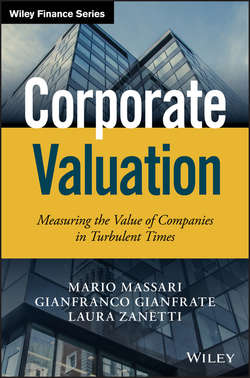Читать книгу Corporate Valuation - Massari Mario - Страница 7
На сайте Литреса книга снята с продажи.
Chapter 1
Introduction
1.1 WHAT WE SHOULD KNOW TO VALUE A COMPANY
ОглавлениеThis book is based on the idea that mastering valuation techniques is possible only after having gained a sound theoretical knowledge. But theory is not enough. In order to evaluate an enterprise or an acquisition, an analyst should have enough first-hand experience: such experience usually does not depend on the quantity of the previous valuations carried-out but on the quality of the work done.
A distinguishing feature of the valuation process is that to produce convincing valuations, analysts should master various areas of expertise, and three in particular:
1. Industrial economics and business strategy with reference to the analysis of the industry and competitive context devoted to understanding the validity of the company's business model, its past results, and its future plans
2. Theory and techniques of finance with regard to the basic principles of net present value, to the underlying links between leverage and value, to models that explain stock prices on financial markets, and finally to the techniques which correctly depict the business plan in terms of cash flow
3. Economic theory, in particular with regard to the relationship between uncertainty and value1
4. in all those cases in which the simplifications assumed in the standard models presented in the finance textbooks do not permit the development of convincing valuations
Despite the fact that theoretical contributions in all three disciplines are widely known, valuation is more than a collage of knowledge and technique. In a valuation, critical drivers are so bound together that the real distinguishing element is the “glue” that holds them together. This glue consists of the ability to balance the different choices made in each phase of which the evaluation process is composed, of correctly weighing the empirical evidence, and of the ability to perform coherent estimates within the final objectives of the valuation work.
1
One of the limitations of such models is the assumption of normal distributions of results. In such a case, the highest probable expected output is the average output. Quite often, though, prospective results are mutually exclusive, thus making expected “average” results unlikely. The very idea of average thus loses its significance.
